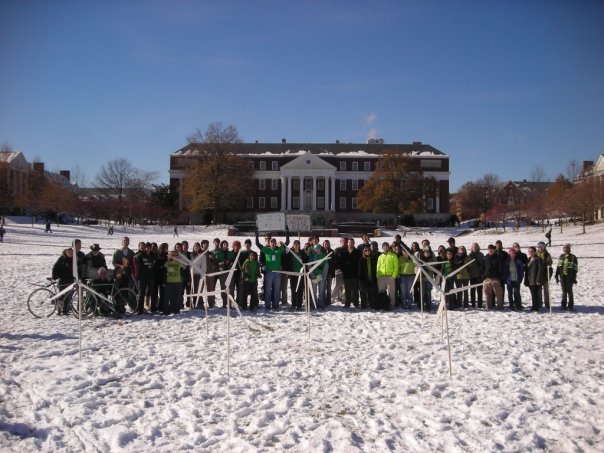 And it’s gonna be cold. And wet probably. But definitely worth it. This’ll be my third year in a row taking the plunge. I get nervous the night before each plunge. So far, though, I’ve managed to come out okay. Having other people plunging in with you really makes a difference. And this year, with over 200 people jumping and twice that much expected, I’ll have lots of company.
And it’s gonna be cold. And wet probably. But definitely worth it. This’ll be my third year in a row taking the plunge. I get nervous the night before each plunge. So far, though, I’ve managed to come out okay. Having other people plunging in with you really makes a difference. And this year, with over 200 people jumping and twice that much expected, I’ll have lots of company.
PJ Park from Mt. Rainer is going to be there. He and two others will be arriving by bike – 32 miles there and 32 miles back.
If you’re not up for riding your bike to Annapolis, but would like to cut down on your carbon footprint, why not consider carpooling. Check out our carpool message board here.
And finally, here are the details one more time:
WHO: Chesapeake Climate Action Network
WHAT: Third Annual Polar Bear Plunge
WHEN:December 8, 2007, 11 am
WHERE: Chesapeake Bay Foundation Merrill Center, 6 Herndon Rd., Annapolis, MD. Map.
LEARN MORE: www.keepwintercold.org
SPEAKERS:
Will Baker – President, Chesapeake Bay Foundation
Delegate Bill Bronrott – House of Delegates, Montgomery County
Mike Tidwell- Director, Chesapeake Climate Action Network, and more



 Last night in St. Paul, VA — ground zero for Dominion Virginia Power’s proposed Wise County coal plant — over 100 citizens raised their voices to question members of the Department of Environmental Quality. Residents raised a variety of concerns. The hearing was organized for DEQ to get input on their
Last night in St. Paul, VA — ground zero for Dominion Virginia Power’s proposed Wise County coal plant — over 100 citizens raised their voices to question members of the Department of Environmental Quality. Residents raised a variety of concerns. The hearing was organized for DEQ to get input on their 
